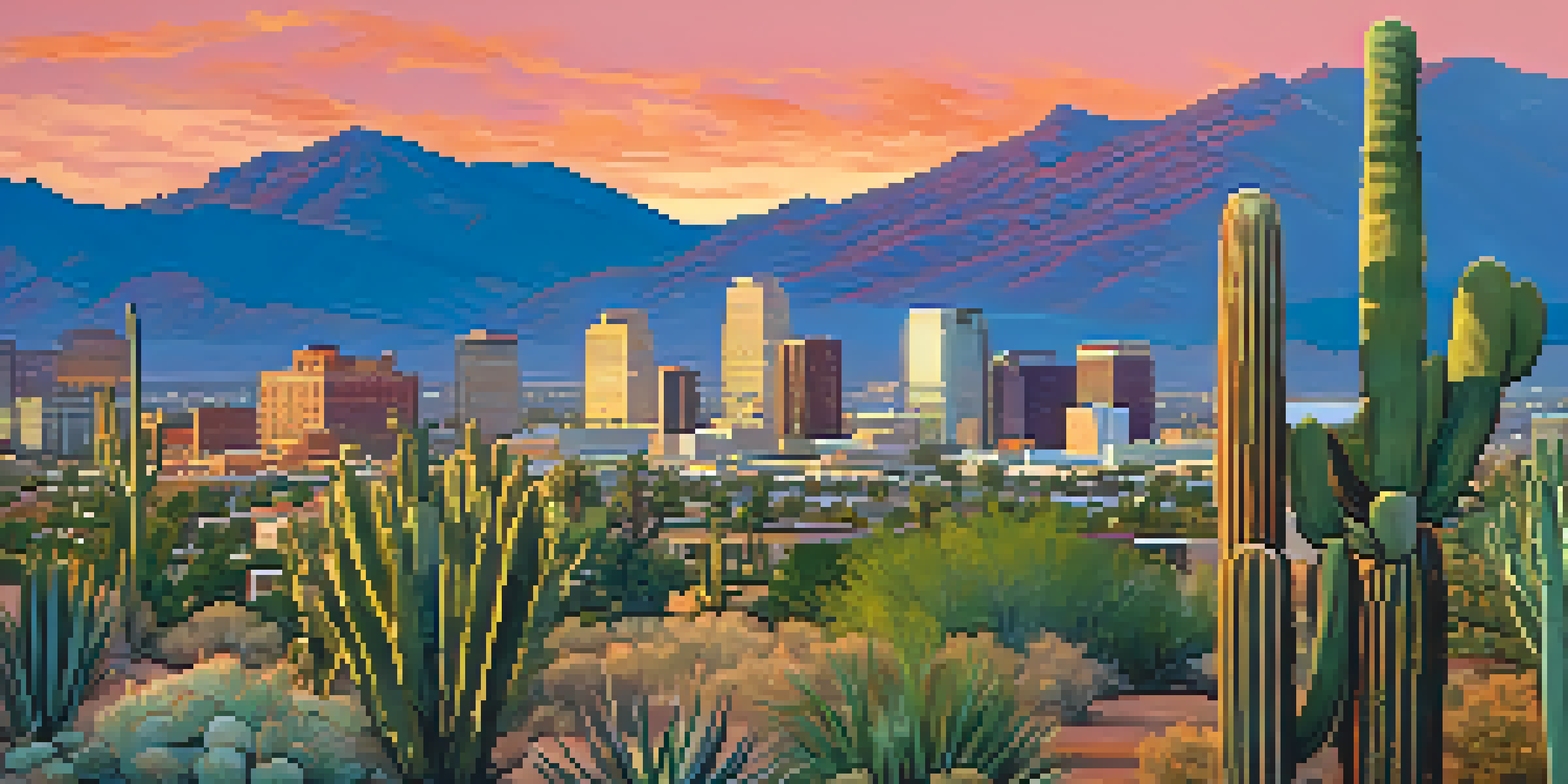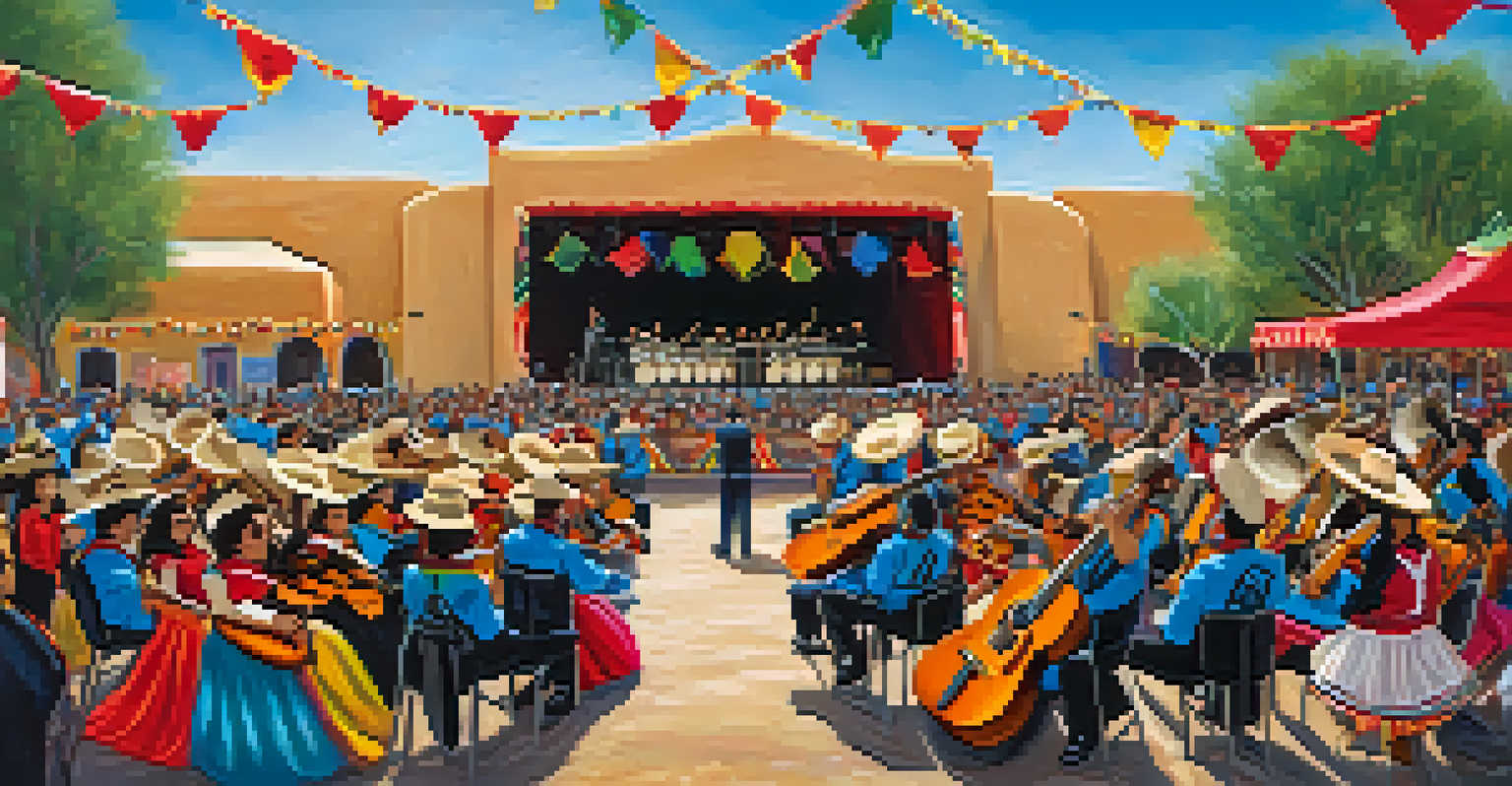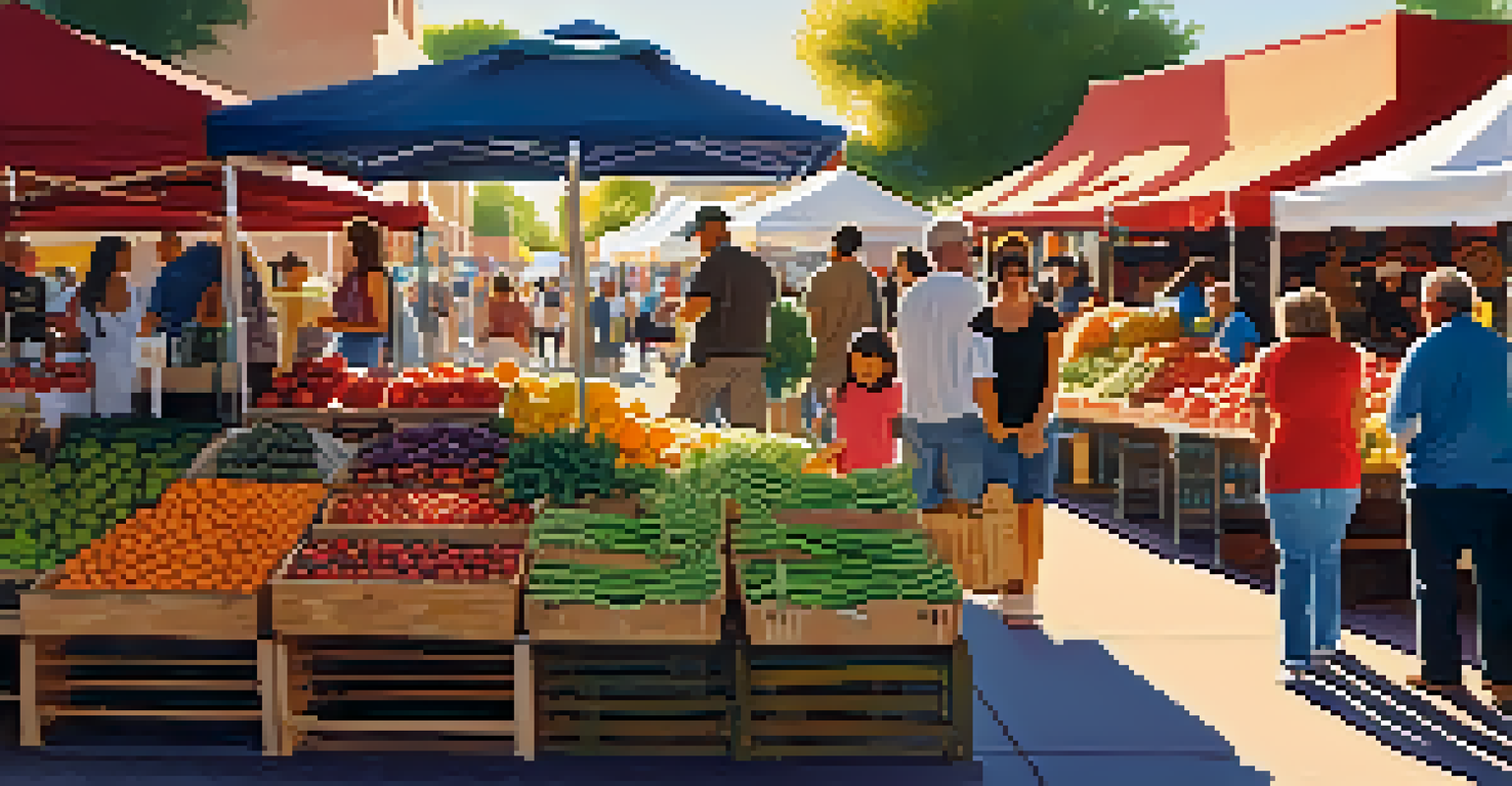Tucson's Unique Cultural Blend Along the U.S.-Mexico Border

The Historical Context of Tucson's Cultural Landscape
Tucson, founded in 1775, has always been a melting pot of cultures due to its strategic location near the U.S.-Mexico border. This historical backdrop laid the groundwork for a unique blend of Native American, Mexican, and European influences. For instance, the Tohono O'odham Nation, which has inhabited the region for centuries, contributes to Tucson's rich tapestry of traditions.
Tucson is a place where cultures meet, creating a unique tapestry that is both rich and vibrant.
As Tucson evolved, it became a hub for trade and migration, further enriching its cultural identity. The arrival of Spanish settlers in the 16th century introduced new languages, religions, and customs that still resonate today. This historical interplay of cultures has shaped not only the physical landscape but also the community's spirit.
Understanding this historical context is essential to appreciating Tucson's vibrant culture. Each layer of history adds depth to the city's identity, making it a fascinating place to explore for both locals and visitors alike.
Culinary Delights: A Taste of Tucson's Fusion Cuisine
One of the most delightful aspects of Tucson's cultural blend is its cuisine, which reflects a delicious fusion of flavors. From traditional Mexican dishes to local Southwestern specialties, the food scene here tells a story of cultural exchange. Imagine biting into a Sonoran hot dog, wrapped in bacon and topped with fresh pico de gallo – a perfect example of this unique culinary blend.

Tucson was even designated a UNESCO City of Gastronomy, highlighting its commitment to sustainable food practices and the celebration of local ingredients. Farmers' markets and local eateries showcase dishes that honor both Indigenous and Mexican heritages, creating a vibrant food culture. This fusion is not just about taste; it’s about community, history, and shared experiences at the dinner table.
Tucson's Rich Cultural History
Tucson's strategic location near the U.S.-Mexico border has made it a unique blend of Native American, Mexican, and European cultures since its founding in 1775.
Whether you're enjoying a casual meal or dining at a gourmet restaurant, Tucson's culinary landscape invites you to savor the richness of its cultural heritage. Each bite offers a glimpse into the stories and traditions that have shaped this border town.
Art and Music: The Creative Heart of Tucson
Tucson's cultural blend is also vividly expressed through its art and music scenes. From vibrant murals that adorn city walls to the rhythmic sounds of mariachi bands, creativity thrives in this desert city. Local artists often draw inspiration from the diverse cultures that surround them, creating pieces that reflect both heritage and contemporary issues.
Food is the ingredient that binds us together, showcasing our diverse heritages and shared experiences.
The annual Tucson Folk Festival is a testament to the city's musical diversity, featuring everything from folk to blues to Latin music. This celebration not only showcases local talent but also brings together artists from various backgrounds, fostering a sense of unity and collaboration. The festival is a great way to experience how music serves as a bridge between cultures.
Art and music are more than just forms of expression; they are vital components of Tucson's identity. They help preserve traditions while also embracing innovation, making the city a dynamic cultural hub.
Cultural Festivals: Celebrating Diversity in Tucson
Throughout the year, Tucson hosts a variety of cultural festivals that celebrate its rich diversity. Events like the All Souls Procession honor the city's connection to Mexican traditions, while the Tucson International Mariachi Conference showcases the vibrant music of the region. These festivals create opportunities for the community to come together and celebrate shared heritage.
The annual Tucson Meet Yourself festival is another highlight, featuring food, crafts, and performances from various cultural groups. It's a fantastic way for residents and visitors to experience the diverse tapestry of Tucson's population. Each festival offers a unique glimpse into the traditions and stories that make this city so special.
Culinary Fusion and Identity
The city's cuisine exemplifies a delightful fusion of flavors, showcasing both Indigenous and Mexican heritages, and has earned Tucson the title of UNESCO City of Gastronomy.
These celebrations not only promote cultural awareness but also strengthen community bonds. They remind us of the importance of inclusivity and the joy of sharing our unique stories.
Architecture: A Blend of Styles Reflecting Cultural Heritage
Tucson's architecture is a visual representation of its rich cultural tapestry. From the adobe buildings that echo Native American traditions to the Spanish colonial influences seen in churches and homes, the city’s structures tell stories of its past. The historic Mission San Xavier del Bac, for instance, showcases stunning Spanish Baroque architecture and is a beacon of cultural significance.
As the city has grown, modern architectural styles have joined the mix, creating a unique skyline that reflects both history and innovation. This blend of old and new can be seen in neighborhoods like El Presidio, where historic homes sit alongside contemporary designs. Such contrasts highlight Tucson's ability to embrace its roots while looking toward the future.
Exploring Tucson’s architecture offers a fascinating journey through time, revealing how various cultural influences have shaped the city's landscape. Each building and structure stands as a testament to the diverse communities that have called Tucson home.
Language: A Reflection of Tucson's Cultural Diversity
Language is a key aspect of Tucson's cultural identity, reflecting the city's diverse heritage. English and Spanish are the most commonly spoken languages, but you'll also hear Indigenous languages, especially in areas close to Native American communities. This linguistic diversity enriches everyday interactions and contributes to the city's vibrant atmosphere.
Bilingualism is celebrated in Tucson, with many local schools and programs promoting language learning. This emphasis on language not only helps preserve cultural traditions but also fosters a sense of unity among residents. For instance, community events often feature bilingual signage and programming, making them accessible to a wider audience.
Cultural Festivals Unite Communities
Tucson's various cultural festivals celebrate its diversity, strengthening community bonds and promoting cultural awareness among residents and visitors alike.
Ultimately, language in Tucson serves as a bridge connecting people from different backgrounds. It highlights the beauty of cultural exchange and the importance of communication in building community.
Community Initiatives: Bridging Cultures in Tucson
Tucson is home to numerous community initiatives that promote cultural understanding and collaboration. Organizations like the Tucson Hispanic Chamber of Commerce work tirelessly to support local businesses and foster economic growth within diverse communities. These initiatives create platforms for dialogue and collaboration, encouraging residents to learn from one another.
Another notable program is the Tucson-Pima Arts Council, which supports local artists and cultural events, ensuring that diverse voices are heard. By providing grants and resources, they empower artists to share their stories and connect with the community. This emphasis on arts and culture helps to cultivate an inclusive environment.

Such initiatives are vital for preserving Tucson's multicultural identity. They remind us that collaboration and understanding are essential for creating a harmonious community where everyone feels valued and represented.